
I’ve been hearing people speak glowingly of the virtues of something called chaga for a few years now, but I never knew much about it. I always get interested in learning things I don't know in a new year, so it seemed like a good time to find out more about this weird substance.
I decide to visit Garrett Kopp, who runs a burgeoning chaga business called Birch Boys out of a workshop in Tupper Lake, to learn all about it.
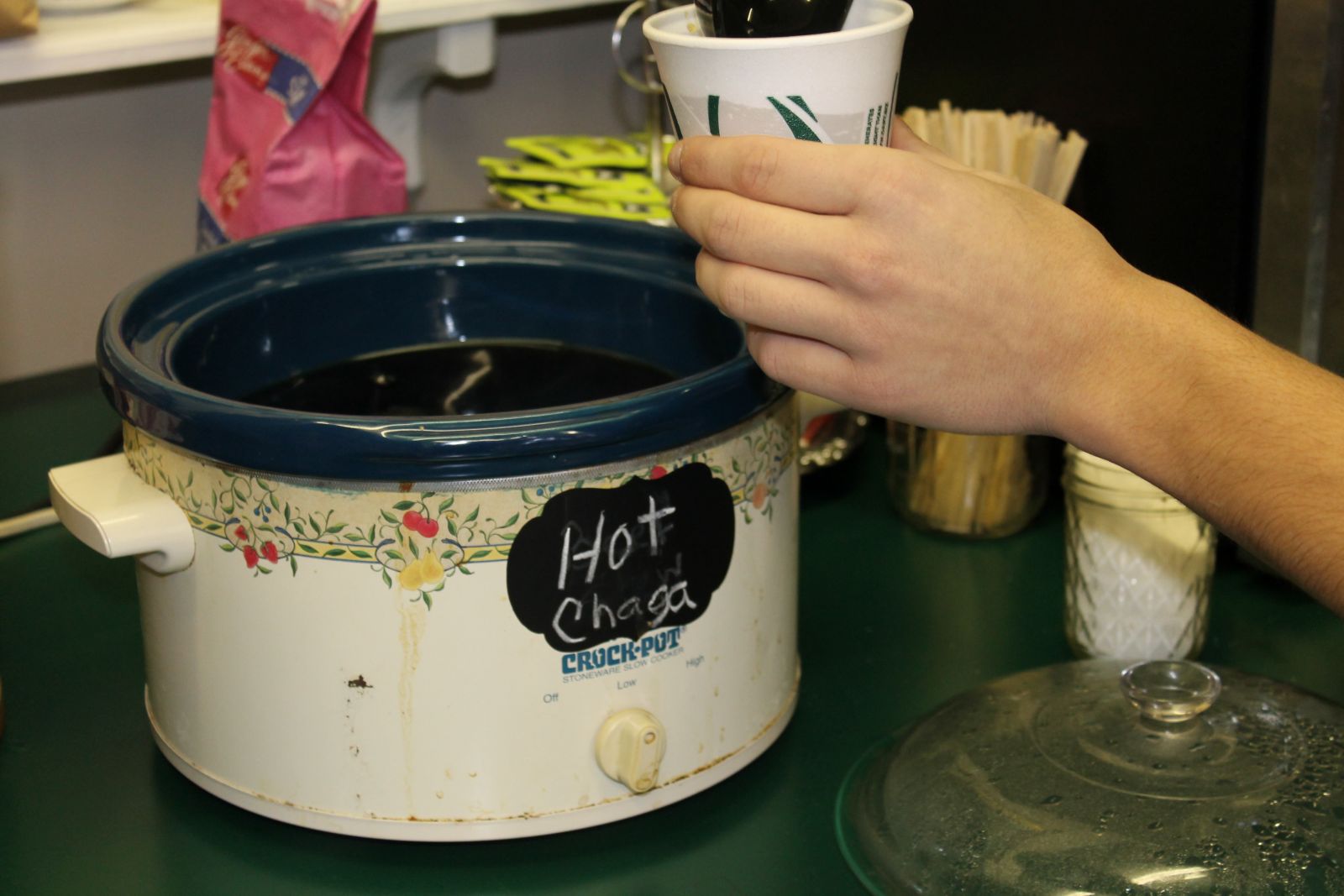
Try the tea
I meet Garrett at the Connection, a bakery/community hangout his stepmother runs. There Garrett offers me a try of his most recently brewed pot of chaga tea.
It's darker than I expected — basically black — and it looks darker than any black tea I've had before.
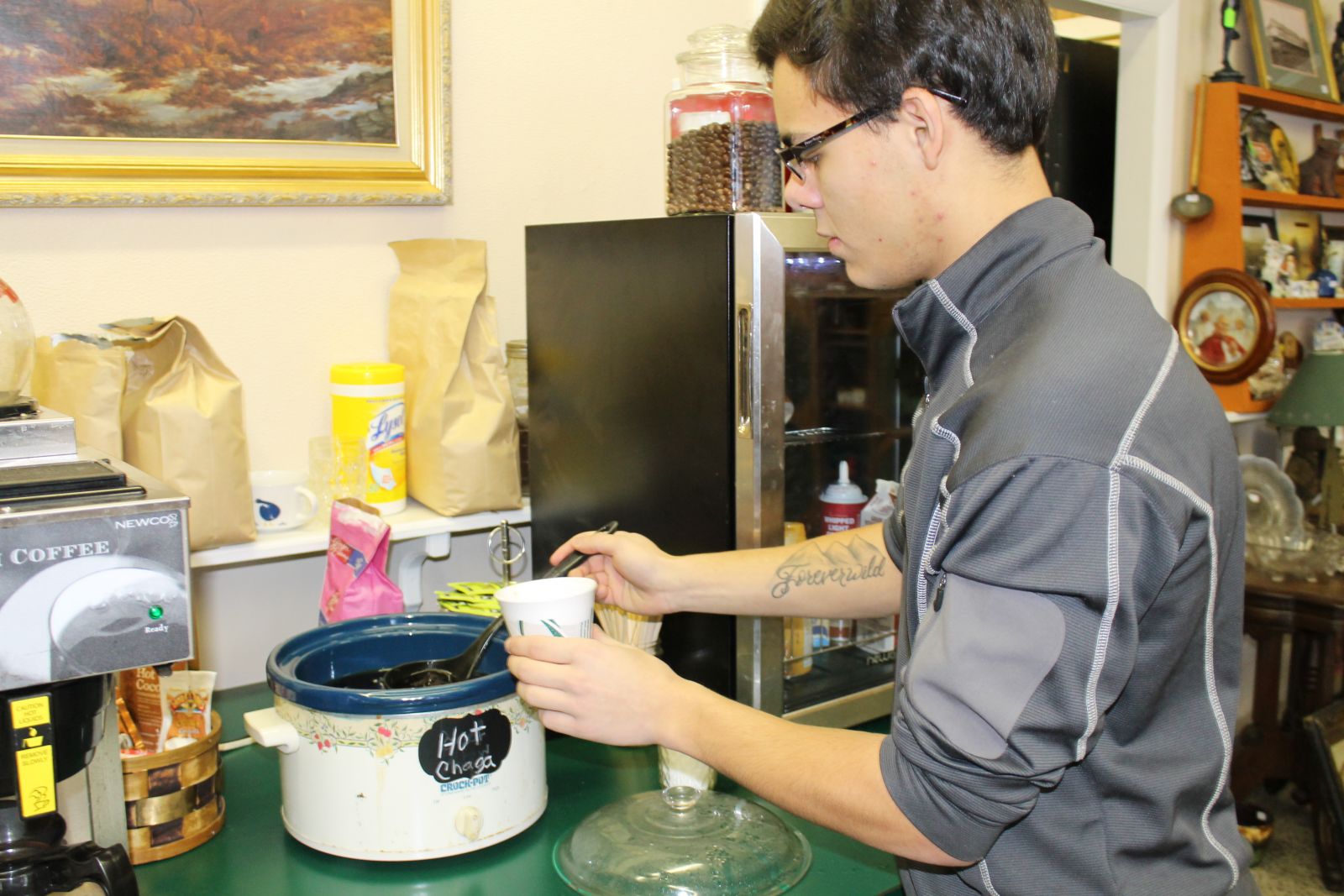
I take a sip. It's super mild! Not what I was expecting at all. Garrett says that it can be stronger, but it all depends on how you prepare it. I like it a lot and drink up, as it feels like it's soothing the cold I'm nursing.
The workshop
We head to his workshop, which is below the Connection. The first thing you notice is a tall shelf stacked with what looks like big, hard knots of charcoal with a softish, bright orange underside.
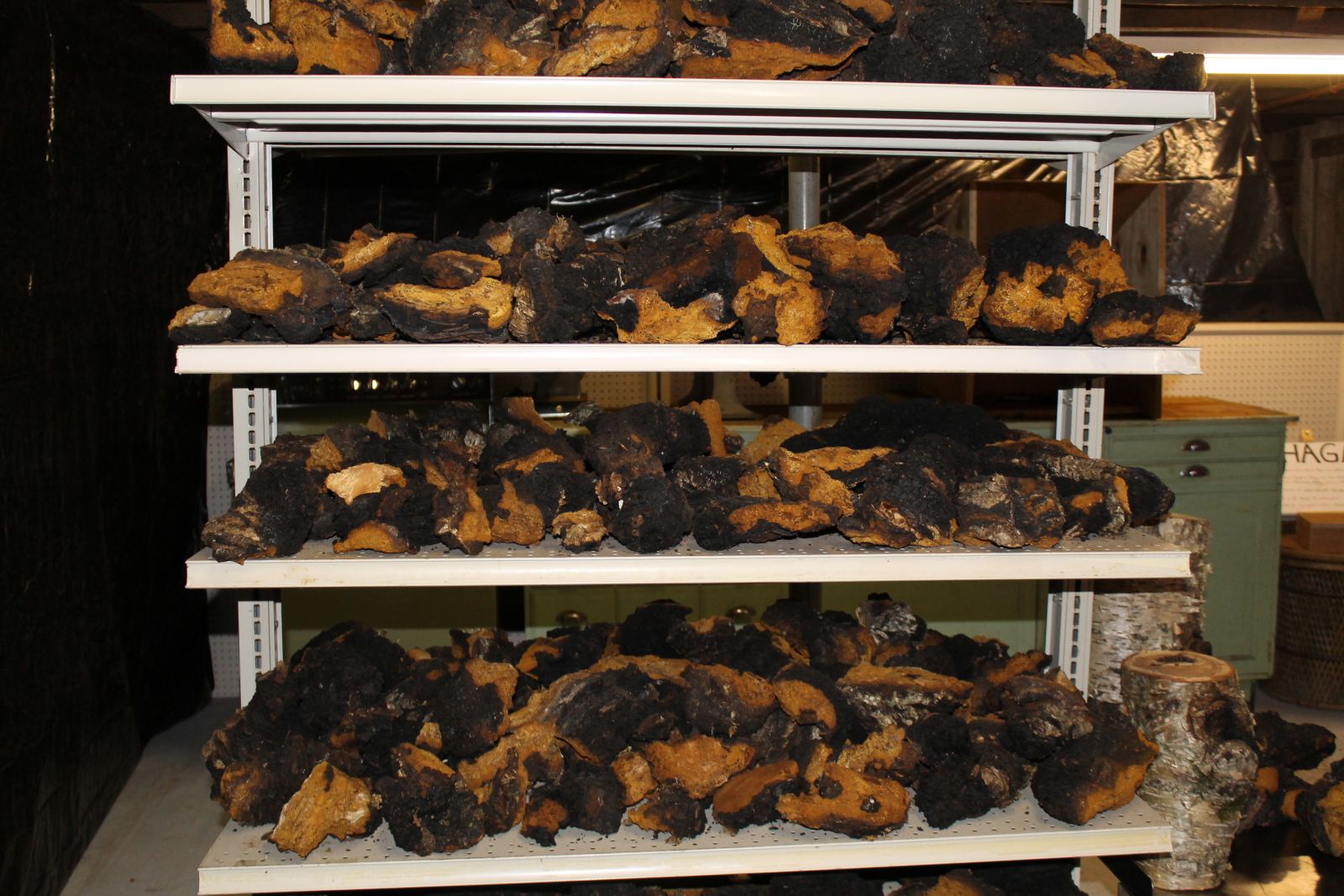
Garrett explains to me that chaga is a parasite fungus. It grows on several different kinds of trees, but birch trees are the only ones he harvests from because it has the most purported health benefits.
Scientifically named Inonotus obliquus, the mushroom is found mainly in semi-Arctic climates with high elevations, which makes the Adirondacks a perfect place to find it. It's also prevalent in Russia.
Chaga starts growing on the inside of the tree, and probably bursts through the side of the tree after a few years, though it's hard to tell how long it takes since no one knows when a tree is first infected. It takes about a decade for chaga to fully mature.
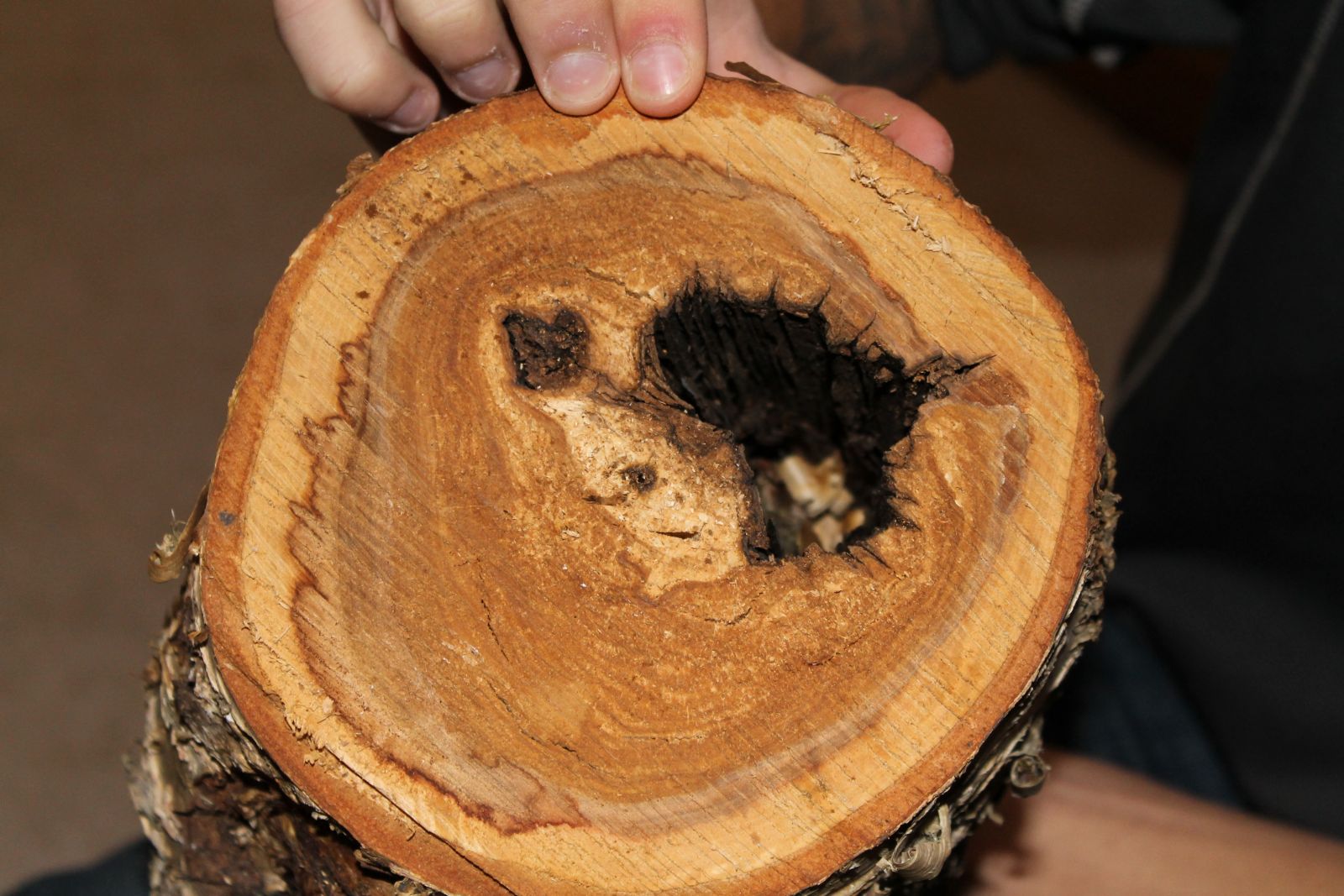
It's a parasite, so it will eventually kill the tree it has infected.
Wait, why ingest it?
Yeah, from what I've described so far, you may not exactly be drooling or jumping at the bit to try some chaga. But here's the important thing about it: It has TONS of purported health benefits.
Birch bark has a chemical compound called betulin that has shown to kill cancer cells in lab and animal studies, and the way chaga grows on birch trees, it concentrates the betulin so it has even more than in normal birch bark.
Chaga has been shown to have the highest antioxidant concentration of any natural substance on Earth. It's believed to boost the immune system, decrease inflammation, help with post-workout revitalization, protect the liver, reduce fatigue, increase mental sharpness, and help people with Crohn's disease, HIV, bacterial infections, heart disease, and diabetes. Among a variety of other rumored effects.
So basically, it does everything.
The problem is that there have been very few studies of the effect of chaga on humans, so none of those health benefits are proven and more clinical trials are needed to confirm its safety and effectiveness, according to the Memorial Sloan Kettering Cancer Center. Garrett can't even legally extol the health benefits of it in his marketing.
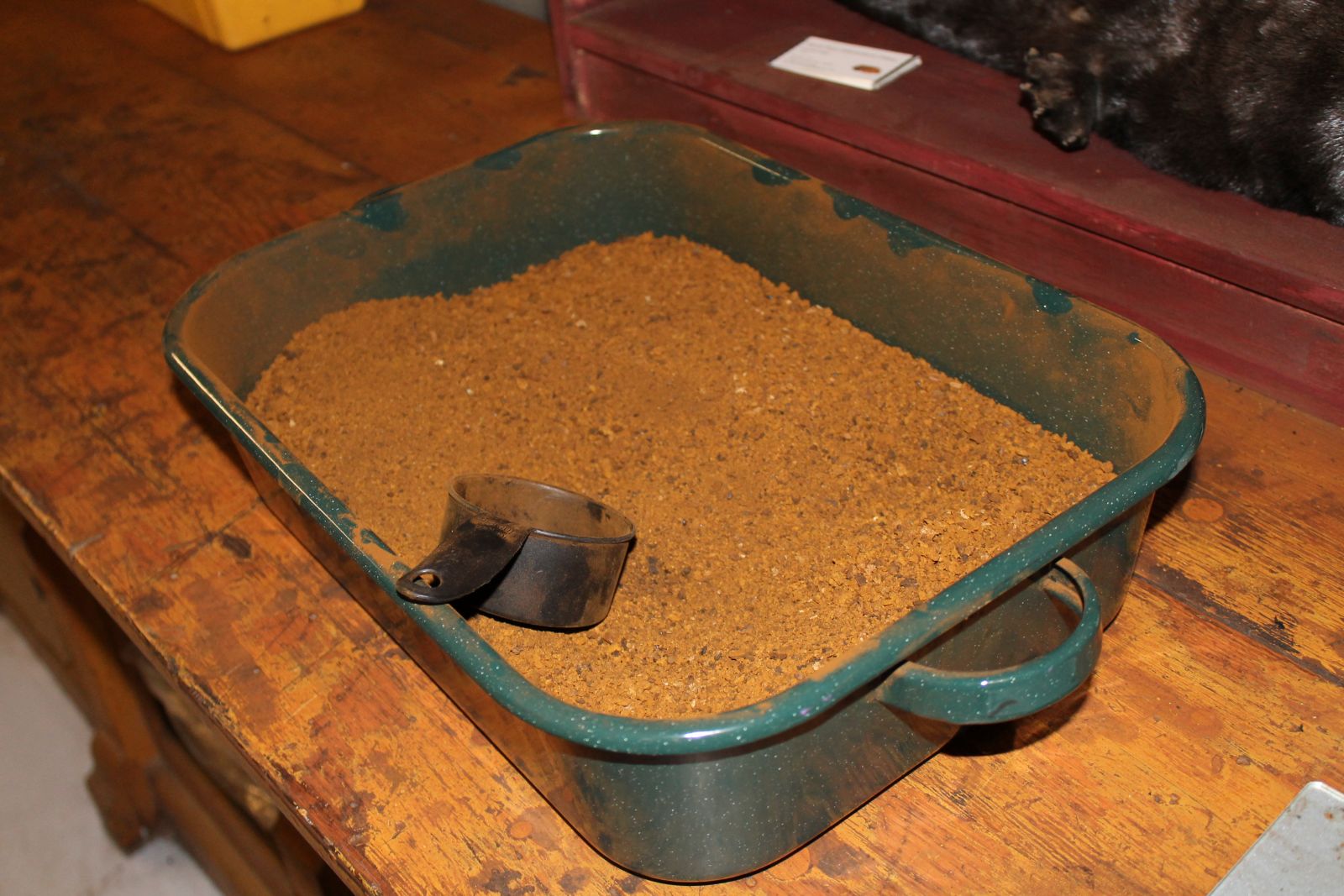 It's well known, though, for its use in folk medicines in Russia, northern Europe, China, and the U.S. for centuries. And Garrett is interested in helping to fund some chaga research on humans. He's hoping to see more happen over the next few years.
It's well known, though, for its use in folk medicines in Russia, northern Europe, China, and the U.S. for centuries. And Garrett is interested in helping to fund some chaga research on humans. He's hoping to see more happen over the next few years.
Garrett first learned about chaga as a teen from his grandmother. She heard about it while on a foraging walk in Maine, then found some when she returned home to the Adirondacks. He unknowingly drank some thinking it was regular iced tea, and she laughed as she told him it was tea made from mushrooms in her backyard. He started looking for it when he was regularly exploring the woods, and eventually he had a stockpile that he decided to try selling at a farmer's market.
He was surprised by how popular it was, and even more so by the emails he would receive from people after they bought his chaga and used it. Their testimonials talked about how much the tea helped with various ailments. That's what drove Garrett to, eventually, create a business to regularly sell it.
Find some yourself!
The cool thing about chaga is that you can find it yourself, take it home, and cook it up! The best place to find it is an old-growth birch forest, since it takes time to grow. While you're out hiking, snowshoeing, or otherwise playing in the woods, look for a black, charcoal-like lump coming out the side of a tree.
Just make sure it's definitely chaga! Hoof horse fungus has a similar look, but it's better for starting for starting fires than it is for eating or drinking.
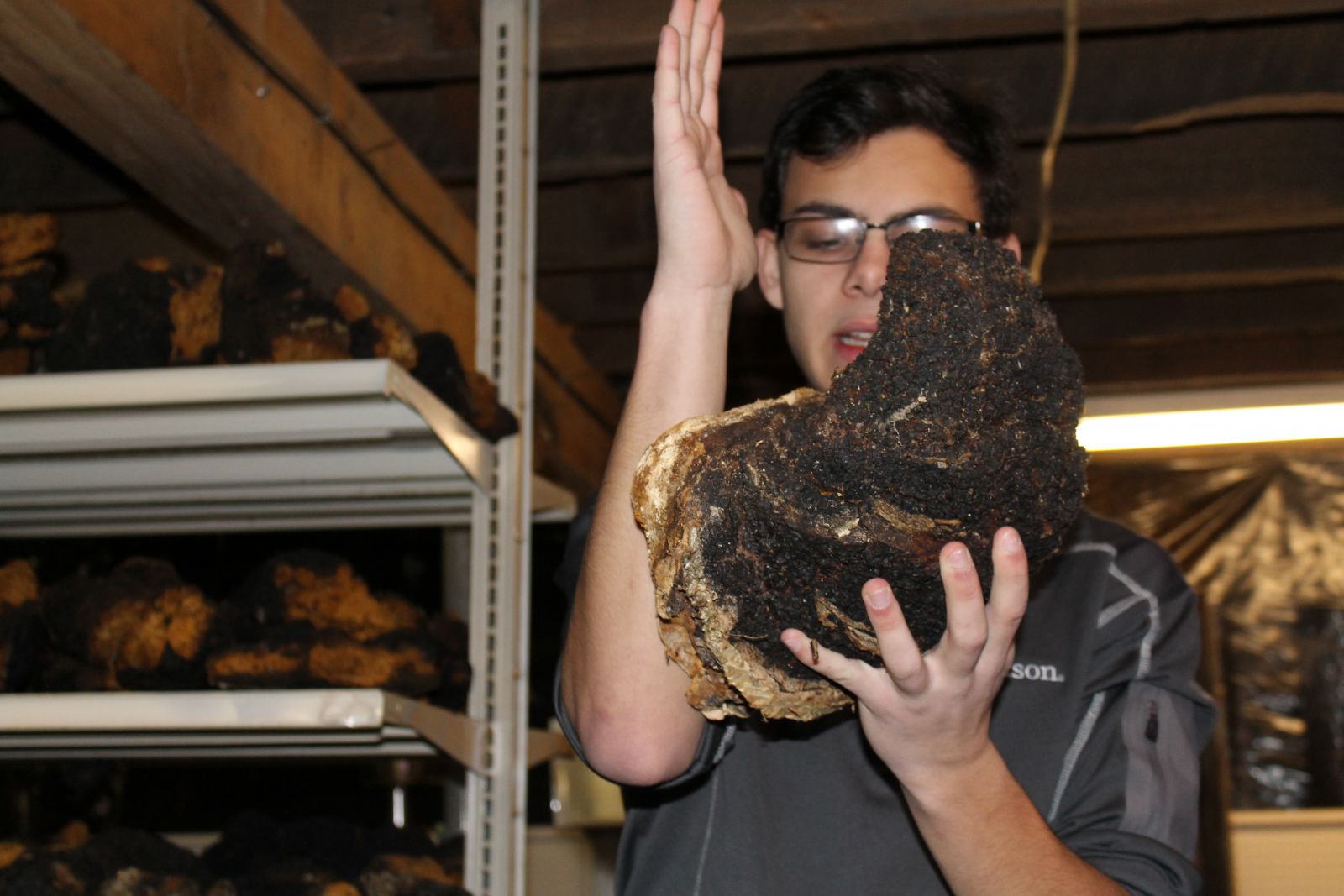
Garrett and the independent contractors he works with to harvest chaga make sure to saw off the lump in a way that leaves 15 percent of it on the tree so it can continue to grow. Sustainable harvesting is important to Garrett, and he and his contractors are building a database of where chaga grows in the Adirondacks. They plan to research the effects of their harvesting to ensure they're not creating too much damage to forests.
He notes that he only has his contractors harvest chaga from private lands with the landowners' permission, and anyone else foraging for chaga should do so as well. It's unclear whether it's legal to harvest chaga from state lands, so you could get in trouble for defacing trees. So don't do it!
When Garrett gets the chaga to his workshop, he first dries it using a dehumidifying system, then uses an ax to chop it down to about the size of golf balls. He takes those pieces and throws it in a huge grinder he got second-hand from a local restaurant to crush it down to powder size. He turns the grinder on to show me how it works; it's a pretty intense piece of equipment that you definitely wouldn't want to get a hand caught in!
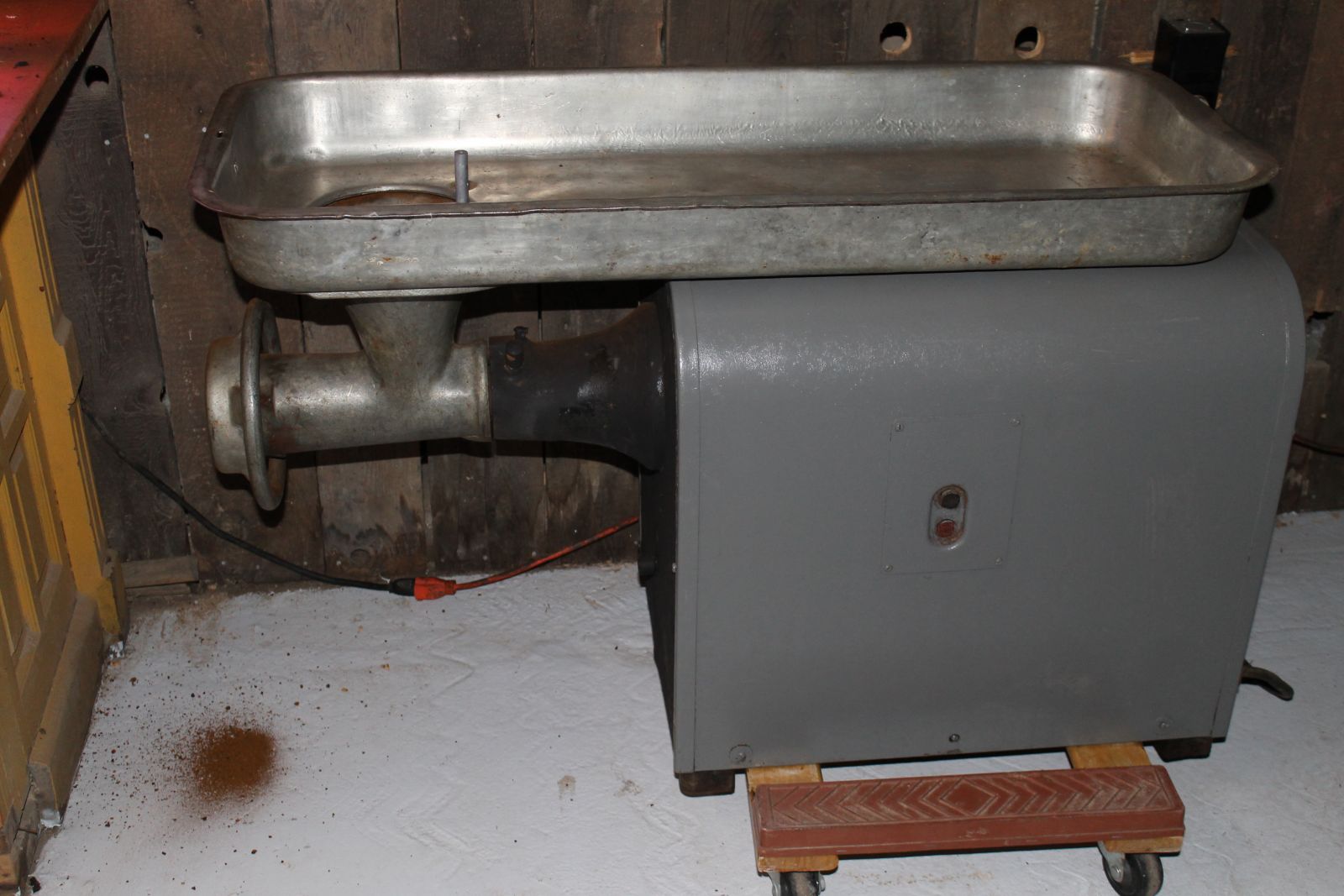
If you're making your own, you can grind it down, or in case you don't have an industrial grinder laying around, you can throw the bigger balls in a crock pot and cook it for a few hours and have the same effect. Just make sure not to boil it, since that might ruin some of those maybe-possible-but-not-proven health effects.
Or if you don't feel like doing all that, pick up a bag of Garrett's Birch Boys Chaga! It's all wild-harvested in the Adirondacks. Garrett sells it in two stores in Tupper Lake: the Health Hub, and the Connection. It's also in 16 other stores including a handful of places throughout the Adirondacks plus a few in Vermont and one in Connecticut, and can be purchased online.
There are other businesses that sell chaga, but Garrett is the only one he knows of wild-harvesting it exclusively in the U.S. He just started his business, but with the help of advisors at Clarkson University, he hopes to continue to grow the business sustainably for some time. I'm so impressed by all he's done at his young age, and all he plans to do in the future.
I thank Garrett and leave workshop happy to know so much about chaga, and with a plan to buy some — and maybe even try harvesting my own!
Make it your resolution to try a new Adirondack activity in 2017!
